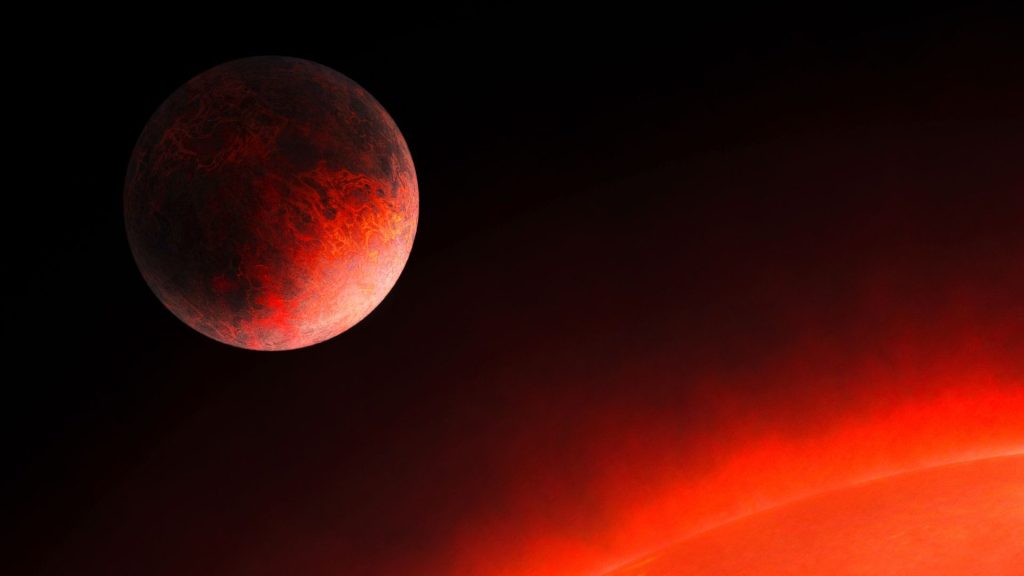About 31 light-years away from us, an unusual planet orbits a red dwarf star: GJ 367b is about two-thirds the size of Earth – but appears to be made almost entirely of iron. Further analyzes by astronomers have shown that the planet orbits its central star about every eight hours and that the temperature on the surface is about 1,500 degrees Celsius. As a result of this heat, the crust and most of the planet’s mantle are believed to have evaporated leaving only the core, which is made primarily of iron, scientists now write in the journal Science.
Using NASA’s TESS space telescope — short for Transiting Exoplanet Survey Satellite — Christine Lahm of the German Aerospace Center in Berlin and her colleagues felt that outer planets GJ 367b for the first time. The satellite looks for periodic fluctuations in the brightness of stars. These, in turn, are powered by the planets that orbit the star and – seen from Earth – regularly pass in front of it. This method of transit immediately provided researchers with the orbital time of a planet, in this case 7.7 hours. The planet’s size also resulted from the weakening of starlight as it transited to about 70 percent of the Earth’s size.
With the help of further observations at ESO’s La Silla Observatory in Chile, astronomers have also identified the mass of GJ 367b. Because due to its gravity, the planet also pulls on its central star, which makes it move easily. By analyzing the spectrum of starlight, the researchers were able to indirectly measure this motion – and infer the exoplanet’s mass from its strength. From volume and mass, Lamm and her colleagues finally determined a density of about 8.1 grams per cubic centimeter, which roughly corresponds to the density of iron.
“Our model of the internal structure of this planet shows that the iron core makes up about 86 percent of the planet,” Lamm and her colleagues said. This makes it less Earth-like than Mercury, whose core makes up 84 percent of its diameter. Like the planet closest to the Sun, GJ 367b is also exposed to strong radiation. The red dwarf star GJ 367b orbits, at 3800 °C, is much cooler than our Sun. Because its surface temperature is about 6000 degrees Celsius. But due to its close proximity to its star, the radiation on an exoplanet is 500 times stronger than on Earth.
When searching for exoplanets, red dwarf stars are especially interesting to astronomers: on the one hand, they are the most common type of star in the Milky Way, and on the other hand, planets orbiting red dwarf stars are easier to detect due to the low brightness of the stars. On average, researchers estimate that each of these stars orbits two or three planets, and many — similar to GJ 367b — are in very narrow orbits. “So far we don’t know anything about the formation of such planets,” Lamm explains. “But by identifying their precise characteristics, we gain insight into the formation and development of such systems.”







More Stories
Ubisoft wants to release a new Assassin's Creed game every 6 months!
A horror game from former developers at Rockstar
Turtle Beach offers the Stealth Pivot Controller for PC and Xbox